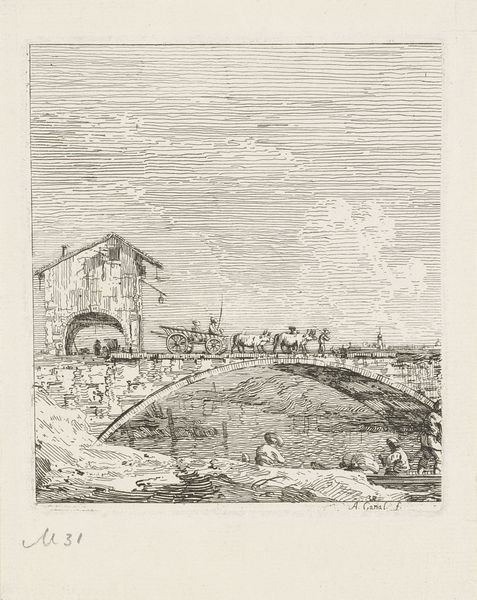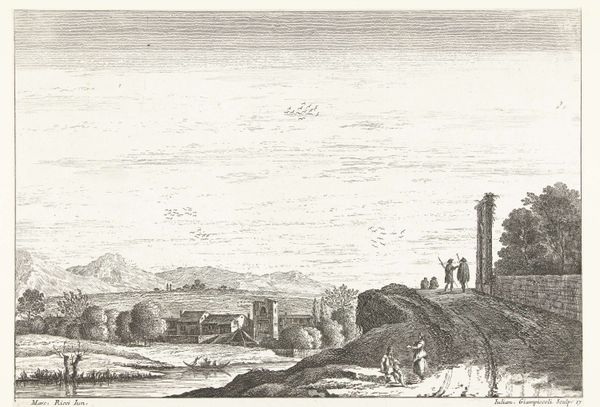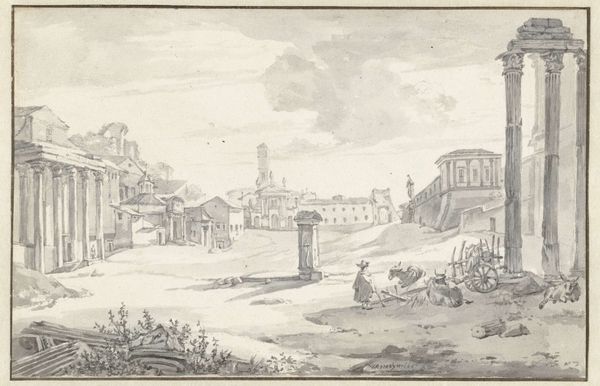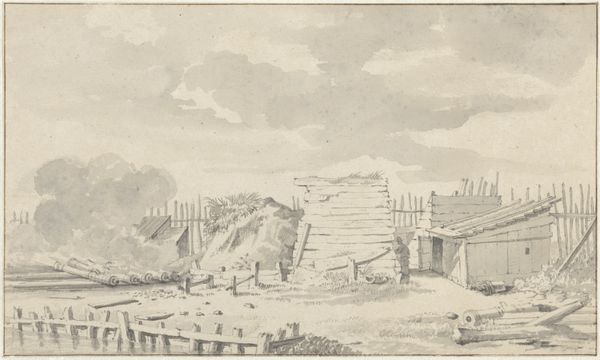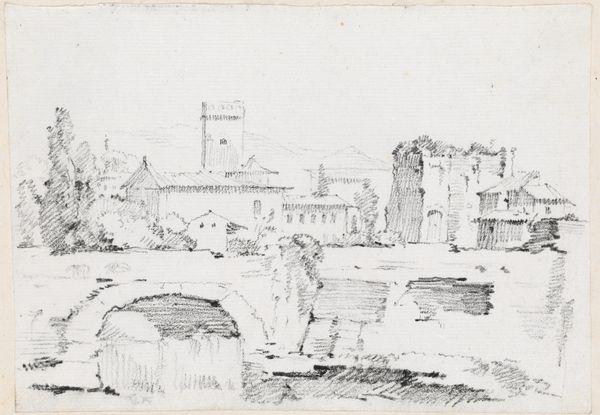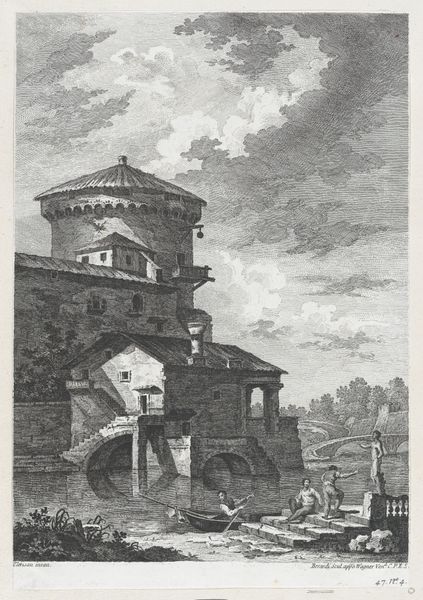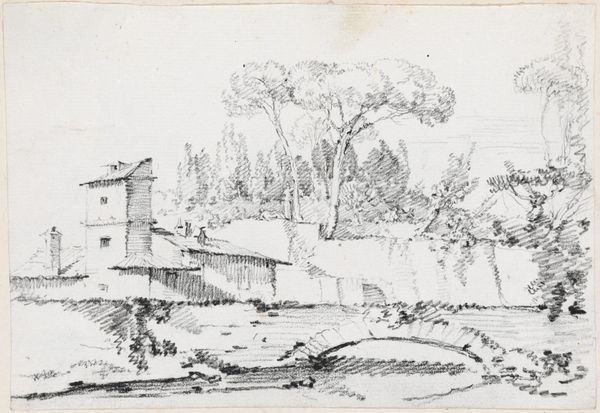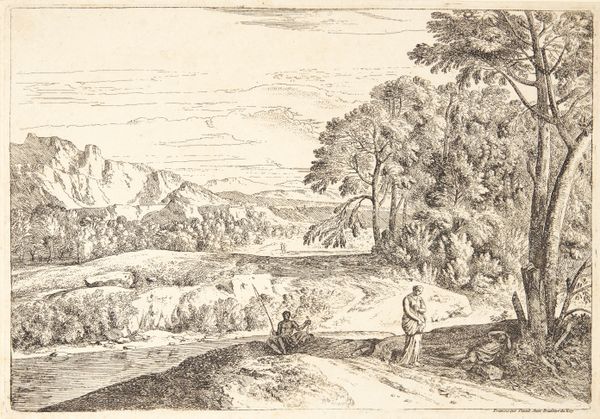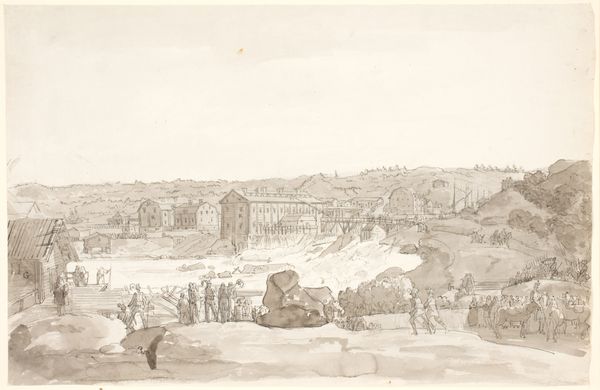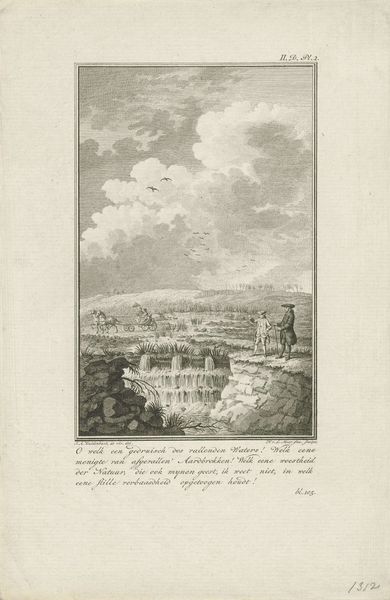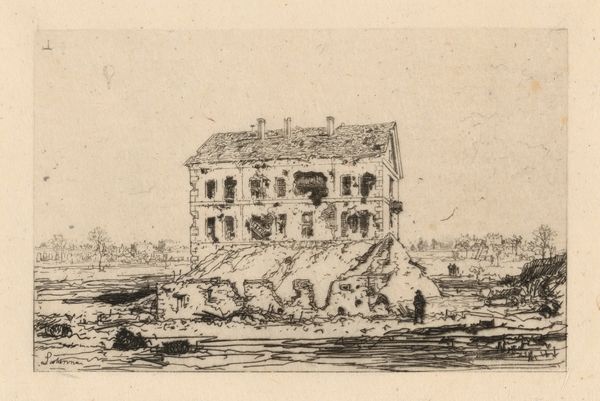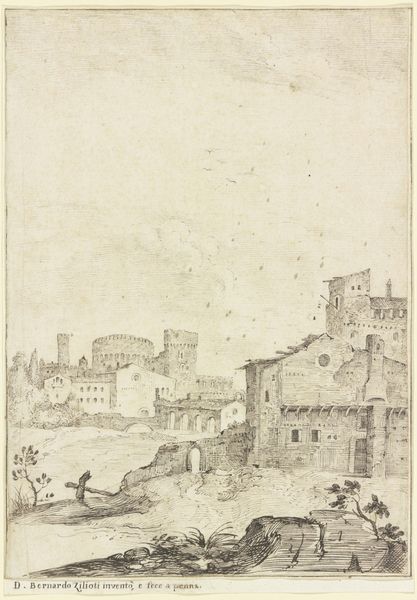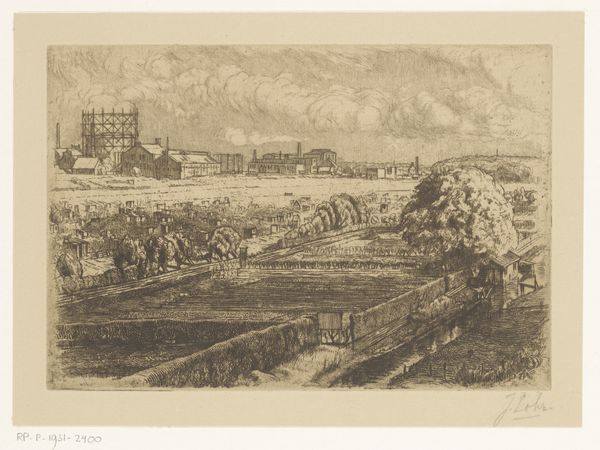
drawing, print, etching, paper
#
drawing
#
baroque
# print
#
etching
#
landscape
#
etching
#
paper
#
cityscape
Dimensions: 141 × 127 mm (image); 145 × 129 mm (plate); 432 × 587 mm (sheet)
Copyright: Public Domain
Curator: Allow me to introduce “The Wagon Passing over a Bridge, from Vedute,” an etching on paper crafted by Canaletto between 1735 and 1744. It's currently held at The Art Institute of Chicago. Editor: At first glance, there's a certain bleakness to this landscape, almost as if the line work aims to emphasize the weight of labor. The rigid strokes give it an almost manufactured feel. Curator: Indeed, observe the rigorous structure—the linear perspective, the balanced composition. Note how Canaletto orchestrates line and form to depict this cityscape; the sky alone consists of near-perfect horizontal parallel lines. Editor: But what interests me is the tangible representation of the laborious act represented, specifically its reliance on etching— a technique demanding precise craft. Each etched line stands testament to repetitive action, a parallel of the everyday actions displayed within the city view. It presents a specific viewpoint on the means through which landscapes are depicted as both labor and process are materialised within the landscape itself. Curator: The material aspects you highlight cannot be separated from its artistic components. Consider how the constraints of the etching medium paradoxically underscore Canaletto's artistry. Through strategic deployment of hatching, stippling, and line weight, depth, texture and, spatial relationships emerge to draw our eyes to the figures as well as the architectural scene presented to us. Editor: And it’s that interaction which emphasizes the city. In representing industry through repetitive strokes as well as showing labor both in creating and within, it draws attention to the role materials play. We witness its effects manifested both literally and within its crafting, reflecting a larger socio-economic pattern inherent in the labor-filled scene portrayed before us. Curator: A fascinating point; perhaps by balancing artistry with process, Canaletto directs us to regard not only what we observe but rather also the structural framework undergirding reality, a glimpse behind the aesthetic façade. Editor: That certainly complicates my initial impression. Perhaps that is one objective which demonstrates how artistic interpretation transforms and builds bridges. Curator: I believe that sums it up rather elegantly, we are reminded how form, structure and medium each has agency in interpreting not just what art communicates but what our perspectives can accomplish when bridging across methodologies and mediums.
Comments
No comments
Be the first to comment and join the conversation on the ultimate creative platform.
